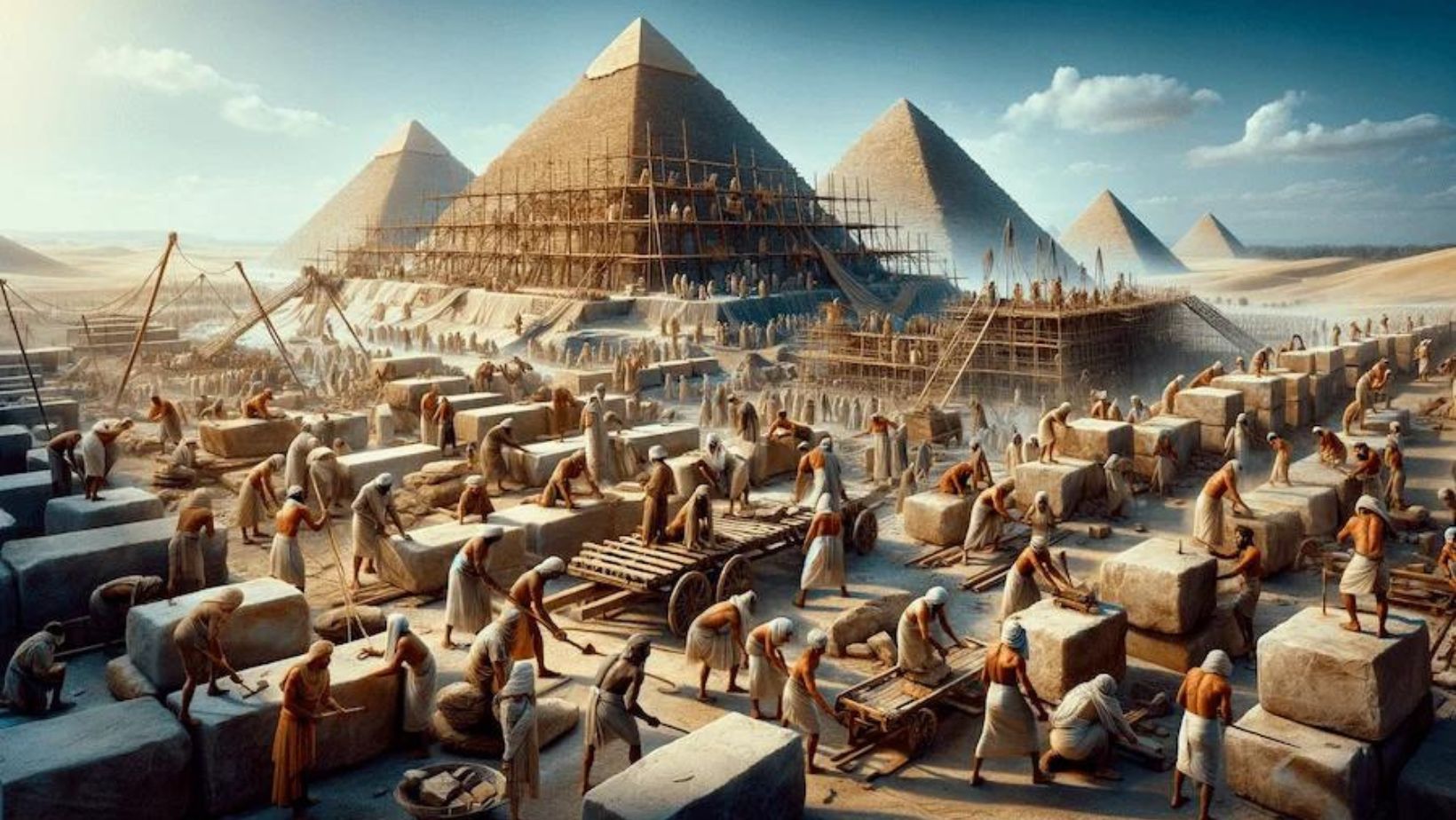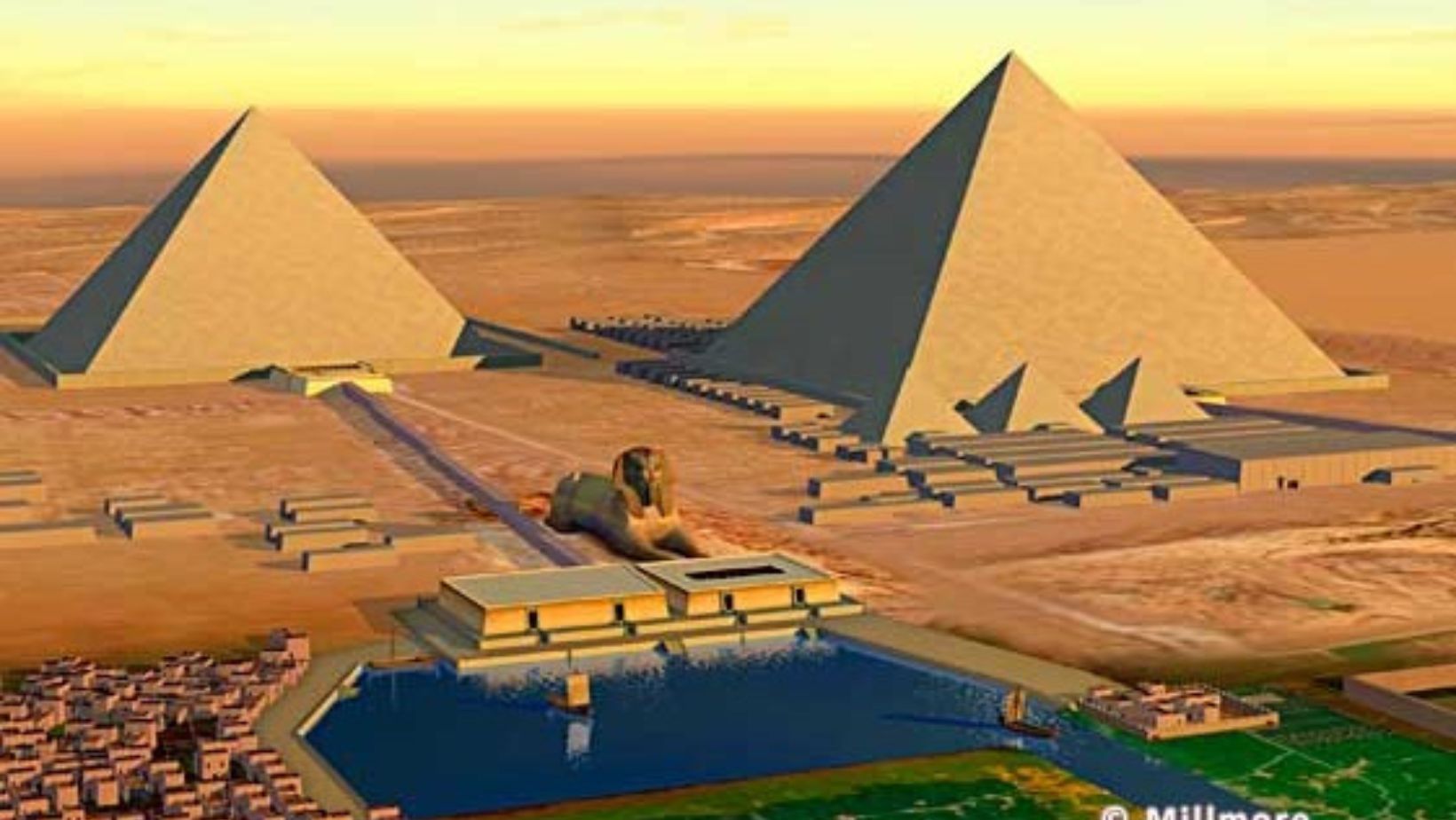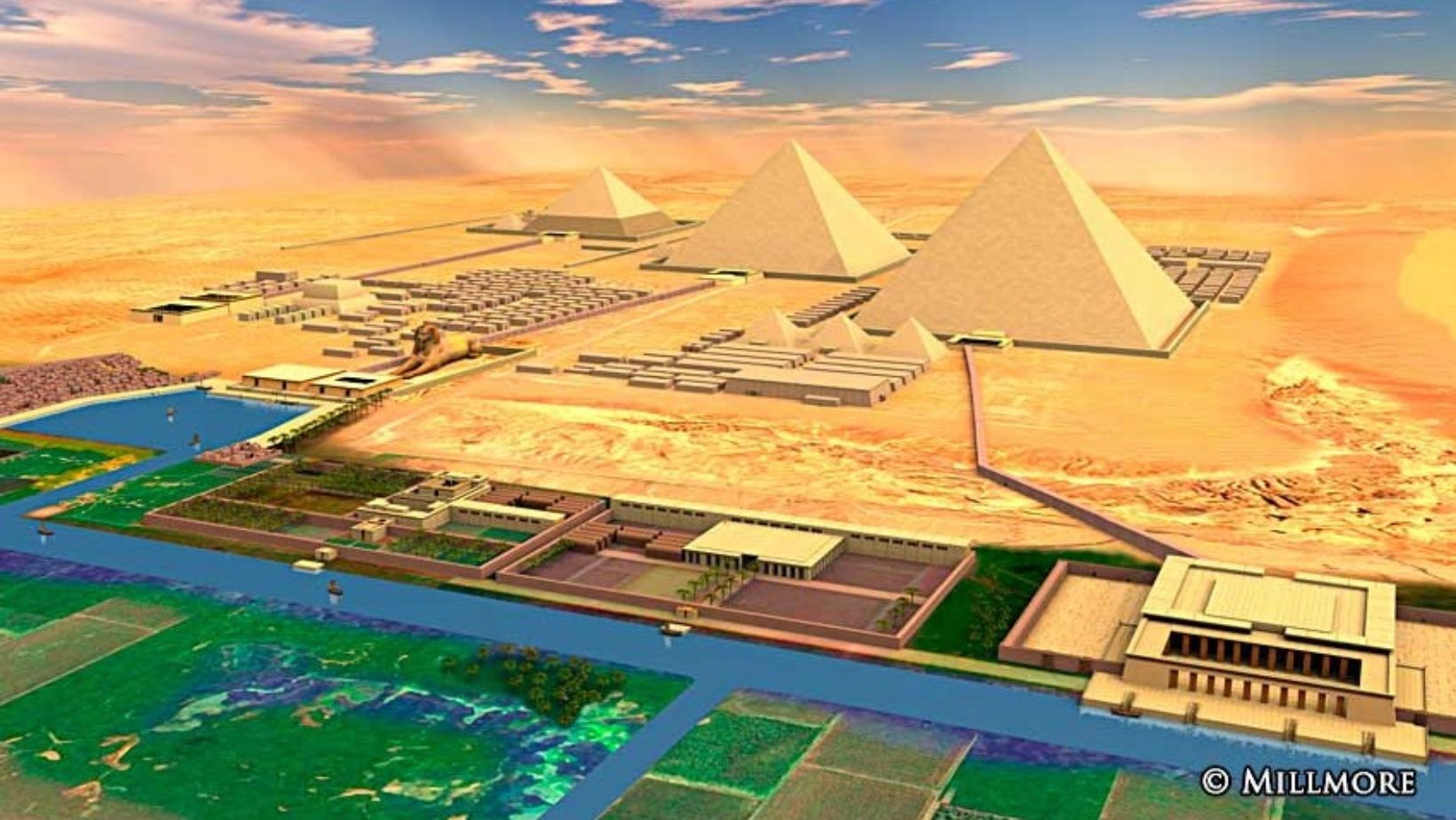The pyramids of Egypt are timeless symbols of ancient engineering and mystery. These monumental structures have fascinated historians, archaeologists, and travelers for centuries. They represent not just the grandeur of the Pharaohs but also a deep connection to ancient Egyptian culture and beliefs.
In recent years, modern technology has opened new doors for understanding these wonders. Digital reconstruction brings the pyramids to life like never before. Through cutting-edge tools and techniques, researchers can recreate these structures in stunning detail, offering fresh insights into their construction and significance. Join us as we explore this exciting intersection of history and technology!
The History of Pyramids Construction

The construction of pyramids in ancient Egypt began around 2700 BCE during the Third Dynasty. The early pyramids, like the Step Pyramid of Djoser, used a series of mastabas stacked on top of each other. This innovative design laid the groundwork for the iconic smooth-sided pyramids that followed. By the Fourth Dynasty, the Great Pyramid of Giza emerged as a testament to advanced engineering and planning.
Ancient Egyptians employed precise techniques to ensure structural integrity. They used large limestone and granite blocks, transported via sleds across the desert. Workers likely employed levers and ramps to lift these massive stones into place. This method allowed for the construction of the pyramids with remarkable accuracy.
Several key milestones mark the evolution of pyramid construction. The transition from step pyramids to true pyramids reflects advancements in architectural design. The Great Pyramid, completed around 2560 BCE, is the largest and most famous, standing at 481 feet tall. Its alignment with celestial bodies showcases the Egyptians’ sophisticated understanding of astronomy. These monumental achievements highlight the significance of the pyramids in ancient Egyptian society.
What is Digital Reconstruction?
Digital reconstruction involves creating virtual models of archaeological sites or artifacts using computer technology. This process helps historians and archaeologists visualize ancient structures as they might have appeared in their original form. The purpose of digital reconstructions is to enhance our understanding of historical contexts and provide educational experiences for the public.
In archaeology, digital reconstruction serves several key functions. It aids in visualizing the construction methods and materials used in ancient structures. This can reveal insights into the technologies and skills of the builders. Additionally, these reconstructions allow researchers to simulate different historical scenarios and test hypotheses about how structures were used.
Various technologies are employed in digital reconstruction. 3D modeling is one of the most common methods, allowing for the creation of detailed, lifelike representations. Virtual reality (VR) takes this a step further, immersing users in a simulated environment. By using VR, people can explore these ancient sites interactively, making the experience engaging and educational. These advanced technologies bridge the gap between the past and present, providing new perspectives on historical landmarks.
Notable Digital Reconstruction Projects of Pyramids
Several notable digital reconstruction projects focus on the pyramids of Egypt, showcasing the power of technology in archaeology. One significant project is the “Giza 3D” initiative, which aims to create a comprehensive 3D model of the Giza Plateau. This project provides detailed visualizations of the Great Pyramid, the Sphinx, and surrounding monuments. It allows researchers to analyze the site and share findings with the public.
Another remarkable project is the “Pyramids of Giza” initiative by the University of Alabama. This project uses laser scanning and photogrammetry to document the pyramids accurately. It enables researchers to study the architecture and construction techniques in unprecedented detail. The data gathered contributes to a better understanding of ancient Egyptian engineering practices.
The “Ancient Egypt” project by the University of Cambridge also stands out. This effort combines virtual reality and 3D modeling to recreate various aspects of ancient Egyptian life. It provides immersive experiences for users, allowing them to interactively explore reconstructed temples, tombs, and pyramids. These projects highlight how digital reconstruction is transforming our understanding of the pyramids and ancient Egyptian civilization.
Benefits of Digital Reconstructions of Pyramids

Digital reconstructions offer significant educational value for both researchers and the public. They provide an engaging way to visualize ancient structures and artifacts, making history more accessible. By bringing the past to life, these reconstructions enhance learning experiences in schools, museums, and online platforms. This visual approach helps people grasp complex historical concepts and appreciate the artistry of ancient civilizations.
Another key benefit is the preservation of archaeological data. Digital models serve as detailed records of sites and artifacts that might be damaged or lost over time. By creating accurate virtual representations, researchers can maintain a comprehensive archive for future study. This preservation allows for ongoing analysis, even if the original sites face degradation.
Additionally, digital reconstructions can facilitate interdisciplinary collaboration. They allow archaeologists, historians, architects, and artists to work together, sharing insights and expertise. This collaboration can lead to new discoveries and deeper understandings of ancient cultures. Overall, digital reconstructions are vital tools that bridge the gap between past and present, ensuring that knowledge of our shared history.
Challenges in Digital Reconstruction of Pyramids
Digital reconstruction faces several challenges that can impact its effectiveness. One major issue is technical limitations. The software and hardware required for high-quality reconstructions can be expensive and complex to use. Additionally, the availability of accurate data is crucial. Many ancient sites lack detailed records or photographs, making it difficult to create precise models.
Another significant challenge is balancing accuracy with artistic interpretation. While digital reconstructions aim to reflect historical realities, they often involve creative decisions. Artists and researchers must fill gaps in the historical record, which can lead to differing interpretations. This subjectivity may cause debates about the authenticity of the reconstructed models.
Furthermore, reconstructions must consider evolving historical perspectives. New discoveries can change our understanding of ancient cultures and their practices. This means that digital models may need frequent updates to remain accurate. As a result, ongoing research and collaboration among experts are essential to refine these reconstructions.
These challenges highlight the complexity of digital reconstruction. Despite these hurdles, the pursuit of accurate and engaging representations of the past continues to evolve. Addressing these issues is vital for the future of archaeological studies and public engagement.
Case Study: The Great Pyramid of Giza
The Great Pyramid of Giza is one of the most famous digital reconstruction projects. This monumental structure, built around 2560 BCE, has undergone extensive virtual modeling to understand its design and construction better. The reconstruction process involves detailed 3D modeling, utilizing historical data, satellite imagery, and laser scanning. These technologies help create a highly accurate representation of the pyramid and its surrounding complex.
Insights gained from this reconstruction are profound. Researchers have discovered more about the construction techniques used by the ancient Egyptians. The models reveal how ramps and levers may have facilitated the movement of massive stone blocks. Additionally, the alignment of the pyramid with celestial bodies has been better understood, showcasing the Egyptians’ advanced knowledge of astronomy.
Digital reconstructions also highlight the pyramid’s role in ancient Egyptian society. They provide context for its significance as a tomb and a symbol of power. By visualizing the original layout and surrounding structures, we gain a deeper appreciation for the cultural and religious importance of the Great Pyramid. Overall, this case study demonstrates how digital technology enriches our understanding of one of history’s greatest architectural achievements.
The Role of Artificial Intelligence
Artificial intelligence (AI) plays a transformative role in enhancing digital models of archaeological sites, including the pyramids. AI algorithms can analyze vast amounts of data, identifying patterns and making predictions that human researchers might overlook. This capability is particularly useful in reconstructing missing or damaged sections of ancient structures. By processing images from various angles, AI can help create more accurate and detailed representations of archaeological sites.
Moreover, AI improves the efficiency of the reconstruction process. Machine learning techniques can automate certain tasks, such as image recognition and data sorting. This allows researchers to focus on interpretation and analysis rather than manual data entry. As a result, the time required for digital reconstruction projects can be significantly reduced.
In the future, AI has the potential to revolutionize archaeological studies further. It could assist in predictive modeling, helping archaeologists identify new sites based on historical data and geographical features. Additionally, AI-powered virtual reality experiences may offer immersive explorations of ancient environments, engaging the public in new ways. Overall, AI is set to enhance our understanding of history and the techniques used to uncover it.
Public Engagement and Interactive Experiences
Digital reconstructions significantly enhance visitor experiences at historical sites, making history more engaging and accessible. By providing detailed visualizations, these reconstructions allow visitors to explore ancient structures as they might have appeared in their prime. Interactive displays encourage participation, enabling guests to touch screens, navigate 3D models, and even manipulate virtual environments. This hands-on approach deepens understanding and fosters a connection to the past.
One example is the virtual tour of the Giza Plateau, where visitors can experience the Great Pyramid and its surroundings through their devices. This immersive tour offers panoramic views and detailed descriptions, helping users appreciate the scale and complexity of these monuments. Another notable initiative is the interactive exhibit at the Egyptian Museum in Cairo, which features augmented reality (AR) elements. Using AR, visitors can view 3D models of artifacts and pyramids, providing context and historical background.
These digital experiences attract a wider audience, including younger generations who may find traditional displays less engaging. By merging technology with education, digital reconstructions invite deeper exploration and understanding of ancient cultures. Ultimately, these initiatives play a crucial role in preserving history and making it relevant to contemporary audiences.
Future Directions in Pyramid Research

Emerging technologies are set to transform pyramid research and digital reconstruction. Innovations like advanced photogrammetry and laser scanning are becoming more precise and accessible. These methods allow researchers to create high-resolution 3D models of the pyramids, capturing intricate details that were previously overlooked. As technology improves, these reconstructions will enhance our understanding of ancient engineering techniques and architectural designs.
Artificial intelligence (AI) is another promising development in pyramid research. AI algorithms can analyze complex data sets and identify patterns, revealing new insights into construction methods and historical contexts. This capability may lead to discoveries about how the ancient Egyptians organized labor and resources during pyramid construction. Moreover, AI can help simulate historical scenarios, offering hypotheses about daily life in ancient Egypt.
The integration of virtual and augmented reality will further revolutionize how we engage with pyramid studies. These technologies will allow for immersive explorations of ancient sites, bringing history to life for both researchers and the public. Overall, these advancements have the potential to deepen our understanding of ancient Egyptian culture and its architectural achievements, shaping how we perceive this iconic civilization.
Conclusion: Pyramids
Digital reconstructions of the pyramids have revolutionized our understanding of ancient Egypt. They offer detailed insights into construction techniques, architectural design, and the cultural significance of these monumental structures. Through advanced technologies like AI, 3D modeling, and virtual reality, researchers can explore the pyramids in unprecedented ways. This not only enhances academic study but also engages the public, making history accessible and relatable. As we continue to develop these digital tools, our perspective on the pyramids evolves, allowing us to appreciate their historical importance and the ingenuity of the civilizations that built them.
FAQs
What are the main challenges in creating digital reconstructions of the pyramids?
Creating digital reconstructions involves technical limitations, such as software and hardware constraints. Additionally, the lack of comprehensive historical data can hinder accuracy. Balancing artistic interpretation with factual representation is another challenge. These factors can complicate the reconstruction process and affect the final output.
How do digital reconstructions differ from traditional archaeological methods?
Digital reconstructions use advanced technologies to create visual models of historical sites, while traditional methods rely on physical excavation and analysis of artifacts. Digital tools allow for greater accessibility and interaction, enabling a more immersive experience. In contrast, traditional methods provide direct physical evidence but may lack the engaging visual context that digital models offer.
Are there any ethical concerns related to digital reconstructions?
Yes, ethical concerns can arise regarding the accuracy and representation of historical sites. Misrepresentations can lead to misconceptions about ancient cultures. Additionally, the use of digital reconstructions in commercial settings may raise questions about the commodification of history. It is crucial for researchers to communicate the speculative nature of certain reconstructions to maintain integrity.
Can digital reconstructions be updated as new discoveries are made?
Yes, digital reconstructions can be updated to reflect new archaeological findings or advancements in technology. As researchers uncover more data or gain new insights, they can revise and improve existing models. This flexibility allows digital reconstructions to remain current and accurate, contributing to an evolving understanding of ancient sites.
How do virtual tours of the pyramids differ from in-person visits?
Virtual tours provide a convenient and accessible way to experience the pyramids from anywhere in the world. They offer interactive elements, detailed explanations, and the ability to explore without the physical constraints of visiting the site. However, in-person visits provide a tangible connection to the historical significance of the pyramids that virtual experiences cannot fully replicate. Each format has its advantages, catering to different learning styles and preferences.

